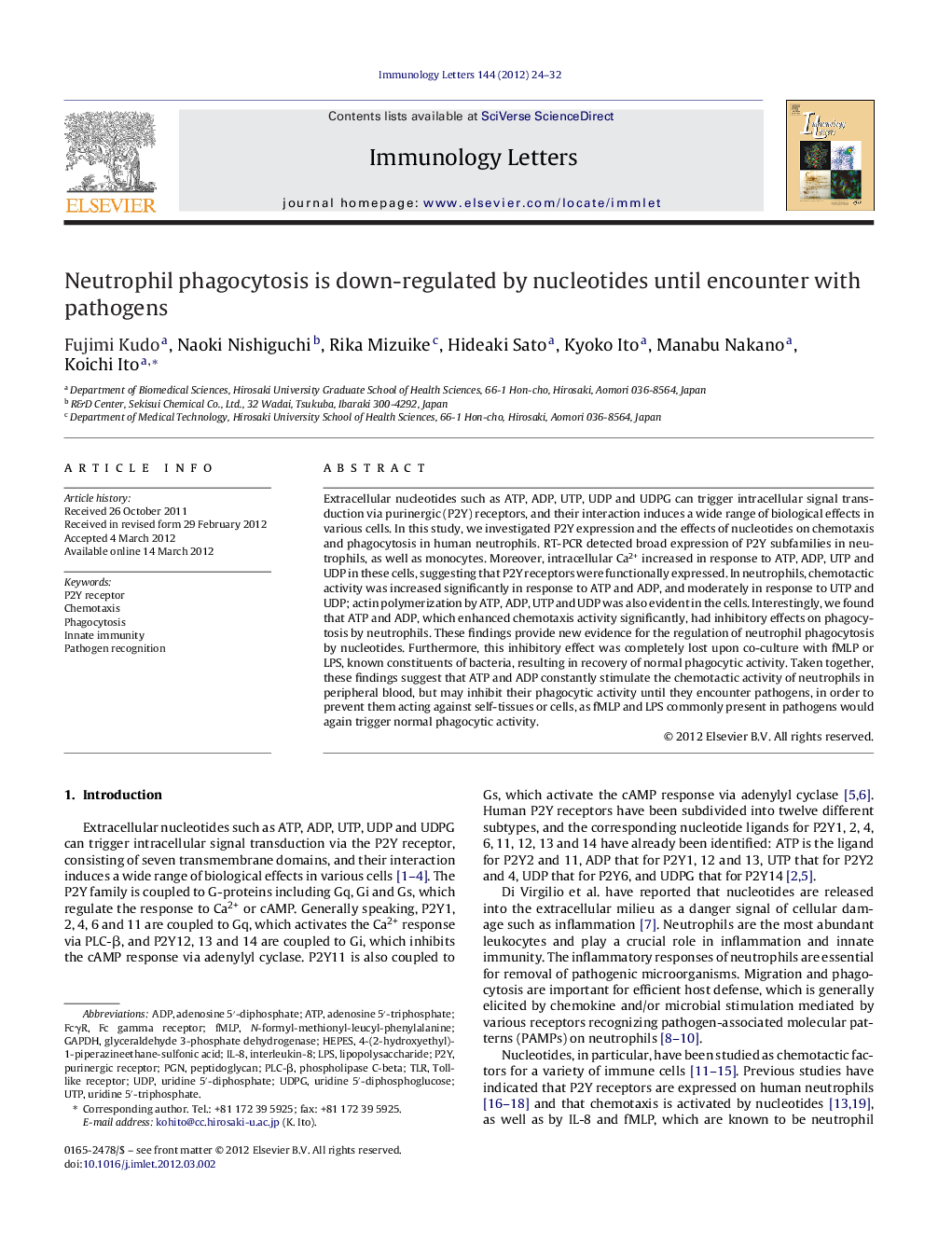| Article ID | Journal | Published Year | Pages | File Type |
|---|---|---|---|---|
| 3355692 | Immunology Letters | 2012 | 9 Pages |
Extracellular nucleotides such as ATP, ADP, UTP, UDP and UDPG can trigger intracellular signal transduction via purinergic (P2Y) receptors, and their interaction induces a wide range of biological effects in various cells. In this study, we investigated P2Y expression and the effects of nucleotides on chemotaxis and phagocytosis in human neutrophils. RT-PCR detected broad expression of P2Y subfamilies in neutrophils, as well as monocytes. Moreover, intracellular Ca2+ increased in response to ATP, ADP, UTP and UDP in these cells, suggesting that P2Y receptors were functionally expressed. In neutrophils, chemotactic activity was increased significantly in response to ATP and ADP, and moderately in response to UTP and UDP; actin polymerization by ATP, ADP, UTP and UDP was also evident in the cells. Interestingly, we found that ATP and ADP, which enhanced chemotaxis activity significantly, had inhibitory effects on phagocytosis by neutrophils. These findings provide new evidence for the regulation of neutrophil phagocytosis by nucleotides. Furthermore, this inhibitory effect was completely lost upon co-culture with fMLP or LPS, known constituents of bacteria, resulting in recovery of normal phagocytic activity. Taken together, these findings suggest that ATP and ADP constantly stimulate the chemotactic activity of neutrophils in peripheral blood, but may inhibit their phagocytic activity until they encounter pathogens, in order to prevent them acting against self-tissues or cells, as fMLP and LPS commonly present in pathogens would again trigger normal phagocytic activity.
► P2Y receptors, which bind to nucleotides, were expressed predominantly on myeloid lineage cells rather than on lymphoid lineage cells. ► A broad range of nucleotides (ATP, ADP, UTP and UDP) act as potent inducers of chemotaxis in neutrophils. ► ATP and ADP also inhibited neutrophil phagocytosis, but the inhibitory effect was removed upon encountering bacteria-derived N-formyl peptide and lipopolysaccharide.
